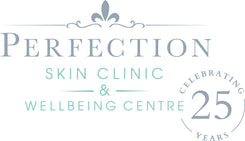Acne Scarring
Acne scars are usually the result of inflamed blemishes caused by skin pores engorged with excess oil, dead skin cells and bacteria. The pore swells, causing a break in the follicle wall. Shallow lesions are usually minor and heal quickly. But if there is a deep break in the wall of the pore, infected material can spill out in to surrounding tissue, creating deeper lesions. The skin attempts to repair these lesions by forming new collagen fibres. These repairs usually aren't as smooth and flawless as the original skin.
There are two main types of acne scars;
Hypertrophic or keloid scarring; - These scars are caused when the body produces too much collagen as acne wounds heal, resulting in a mass of raised tissue on the skin's surface.
Atrophic or depressed scarring; - These scars develop when there is a loss of tissue. There are two common types of atrophic scarring. "Iccepick" scars are usually small, yet obvious holes in the skin. "Boxcar" scars are depressed areas, usually round or oval in shape with steeply angled sides, similar to chickenpox scars.
Do's and Don'ts
Do -
- Stay out of the sun. Overexposure to the sun can darken scars and make them look more prominent.
Don't -
- Irritate inflamed skin. Over-washing or scrubbing scarred areas can further reduce skin elasticity and heighten the appearance of the scar.
- Pick at scars. Bacteria from unwashed fingers and nails increase the risk of additional cysts forming, leading to the development of a larger scar.
- Give up on acne scars. New techniques - some non-surgical - can drastically improve both the depth and appearance of acne scars.
Treatments Recommended
Every persons skin is different and acne scarring will vary from client to client. No treatment alone will offer full removal of acne scarring. Treatments and products together can certainly improve the look of the skin but it will take time and patience to get results.
Digital Microneedling - A controlled form of microneedling. Can be altered in size and depth for different parts of the skin.
I would recommend a thorough skin consultation with us to ensure we can bespoke the treatment plan that would be right for you.
